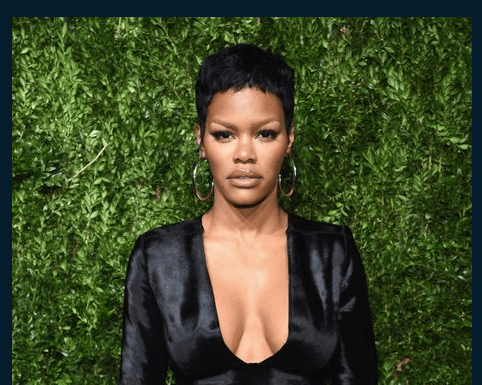Teyana Taylor has put up a remarkable, multi-layered career over the last 20 years, one that demonstrates both skill and deliberate reinvention. Growing up in Harlem, an area teeming with artistic activity, Taylor was exposed to creativity in every storefront tune and sidewalk beat. Since making headlines on MTV’s My Super Sweet 16, the musician has developed into a formidable force who effortlessly combines stage charisma with business savvy.

In 2007, she made her public debut as a fearless adolescent with futuristic style and a self-assured stride. Despite the delays and disappointments that plagued her early music career with Pharrell Williams’ Star Trak label, Taylor’s split from the label proved especially advantageous. She was able to take back control of her story and release music on her own after that daring departure in 2012. After launching The Misunderstanding of Teyana Taylor, she soon signed a record deal with Kanye West’s G.O.O.D. Music, a label that embraced rather than suppressed her distinct artistic style.
Teyana Taylor: Personal and Career Overview
| Category | Details |
|---|---|
| Full Name | Teyana Me Shay Jacqueli Taylor |
| Date of Birth | December 10, 1990 |
| Age | 34 (as of 2025) |
| Birthplace | Harlem, New York City, U.S. |
| Nationality | American |
| Occupations | Singer, Actress, Dancer, Director, Entrepreneur |
| Active Years | 2005–present |
| Labels | Star Trak, G.O.O.D. Music, Def Jam |
| Children | Two daughters |
| Estimated Net Worth | $5 million (2025) |
| Key Projects | VII, K.T.S.E., The Album, Fade 2 Fit, Adidas Harlem GLCs |
| Fashion Collaborations | Victoria’s Secret, Adidas Originals |
| Notable Films | Madea’s Big Happy Family, A Thousand and One, Coming 2 America |
| Verified Source | CelebrityNetWorth.com |
VII, her 2014 debut studio album, had an unforeseen impact, reaching the top of the R&B charts and establishing her as a voice redefining contemporary soul rather than merely a singer. K.T.S.E. enhanced her artistic abilities in 2018, particularly with the poignant song “Rose in Harlem,” which was an autobiographical homage to her childhood and tenacity.
In 2016, the “Fade” video became a cultural icon. Taylor created choreography that attracted a new degree of public attention with its athletic and seductive sights. Her fitness empire was sparked by that incredible performance, which did more than just enthrall audiences. The 90-day fitness program “Fade 2 Fit” became more than simply a fad; it was a brand that encouraged women to achieve strength through movement. The program stood out in a crowded market thanks to its matched athleisure collection, which featured her fiery Harlem edge and was surprisingly reasonably priced while yet being incredibly durable.
Her hustling extended to footwear. In 2013, she teamed with Adidas to design the Harlem GLCs—sneakers that sold out in record time and are now collector’s goods. R&B artists seldom shatter sales records for sneakers, but Taylor has a talent for transforming culture into business. Her breakthrough with Adidas opened the door for her further fashion ventures, like as The Teyana Taylor Edit, a very intimate 2025 collection with Victoria’s Secret. She did more than just pose for the camera; she supervised the design, dressed the collection, and gave an East Coast edge and diversity to a legacy brand that was having trouble being culturally relevant.
In terms of money, her projected $5 million net worth seems incredibly low given the variety of her interests. However, her brand value—what she contributes to each campaign, partnership, or movie project—is not adequately represented by that number. Her critically praised lead part in A Thousand and One demonstrated that she can command the screen with the same level of conviction as a studio microphone. Her emotionally complex performance put her in a category of actresses renowned for their capacity to subtly inspire and destroy rather than for playing a large number of parts.
When you examine Taylor’s professional trajectory in light of her identity, the cultural influence of her work becomes more apparent. In a field that all too frequently rewards palatability, Taylor’s unwavering presence as a dark-skinned, outspoken Black woman challenges standards of beauty, fashion, and even commerce. Her all-female, all-colored production business, “The Aunties,” is creating movies and music videos that properly elevate marginalized voices. By doing this, she is not only producing art but also building the infrastructure necessary for others to prosper.
Her personal life, particularly her marriage and ultimate separation from NBA player Iman Shumpert, has been handled with controlled candor. Taylor focused on her girls, her brand, and her future as the media focused on reports of custody agreements and monetary settlements. Divorce did not define her. Rather, it emphasized her tenacity and reaffirmed that she was always the star and never a co-star.
Taylor’s career may seem more subdued when compared to her peers, such as Rihanna, who ventured into the beauty industry with Fenty, or Cardi B’s luxury sponsorships. However, it is noticeably more self-curated. Her mark is on every effort, from fashion to CDs. Instead of being given an opportunity, she creates it. That tenacity is particularly remarkable in a digital society that values flash over substance. Taylor’s brand, however, grows not through viral bursts, but through consistency and honesty.
